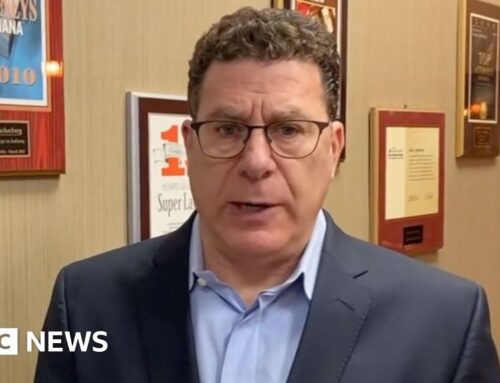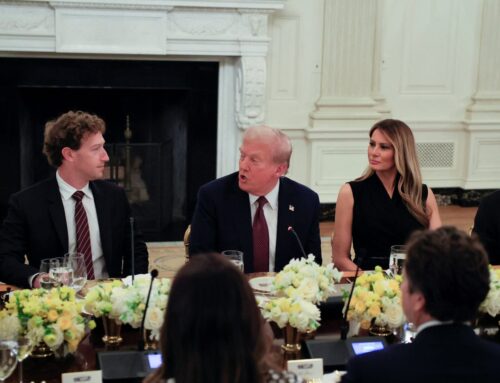What OpenAI’s push for independence ultimately means for Microsoft’s $14 billion investmen
July 25, 2025
What began as a fairytale alliance between Microsoft and OpenAI has evolved into a public feud — leaving many to wonder: What does it all mean for investors? In recent weeks, there have been reports of rising tensions between the two companies as they look to renegotiate the terms of their contract. OpenAI wants to break free from Microsoft’s tight hold on its products, compute power, and technology. It also needs permission from Microsoft to finalize a conversion into a more traditional corporate structure. For its part, Microsoft is angling for a bigger post-conversion stake than the AI startup is willing to give up. In an elusive pursuit of finding a middle ground, executives at OpenAI have even considered accusing Microsoft of anticompetitive behavior, according to a report in The Wall Street Journal. “They’re in a game of high-stakes poker,” Wedbush analyst Dan Ives told CNBC. The partnership started friendly enough. In 2019, Microsoft invested its first billion dollars in OpenAI to develop artificial technologies on its Azure cloud platform. That investment has since grown to $14 billion, and the value of the creator of the popular ChatGPT chatbot is more than $300 billion. While OpenAI was founded as a non-profit with the mission of ensuring AI was developed “to benefit all of humanity,” the founders quickly found they needed to be for-profit to raise the kind of money needed to build out the technology. D.A. Davidson analyst Gil Luria called the talks the “most important thing that’s happening right now in AI.” Microsoft is currently locked into a quite favorable contract with OpenAI. The current agreement, which runs through 2030, includes intellectual property rights, exclusivity of OpenAI’s application programming interface, or API for short, on Microsoft’s Azure cloud, and 20% of OpenAI’s revenue — which means Microsoft will continue to reap the rewards from OpenAI’s success and has an incentive to foster further growth. A contractual clause regarding artificial general intelligence has become a major focal point for the reason why the two companies are at odds. If OpenAI can achieve so-called AGI — which is the idea that it could create a model to match or exceed human intelligence — the clause would void Microsoft’s access to OpenAI’s technology. Microsoft wants the clause removed as part of the renegotiation. In the meantime, the clock is ticking, and OpenAI could end up forfeiting billions of investment dollars, including $40 billion from SoftBank and other investors, if a deal isn’t struck by the end of the year. In general, investors want to ensure that their returns are not capped as a result of OpenAI’s current structure. “You’re negotiating with one of the best in the world,” Ives said, referring to Microsoft CEO Satya Nadella. “OpenAI losing Microsoft would be like trying to play baseball without a shortstop, and Microsoft knows that. So, they’re leveraged.” Ives has no hesitation about Microsoft’s dominance as of late, even predicting it would be the next stock to follow portfolio name Nvidia into the $4 trillion market cap club. It’s not all one-sided, though. OpenAI has played a significant role in Microsoft’s growth. After all, it was OpenAI’s viral release of ChatGPT in November 2022 that helped catapult and cement Microsoft’s reputation as an AI frontrunner. Part of the collaboration, which expanded in both 2021 and 2023, centered around advancing Azure’s AI infrastructure. Fast forward to Microsoft’s fiscal 2025 third quarter earnings call, Chief Financial Officer Amy Hood said that revenue from its AI business was “above expectations,” with commercial bookings up 18% thanks to OpenAI’s commitment to Azure. The long-term financial upside is massive. If OpenAI fulfills its projections of revenue of more than $125 billion by 2029, the partnership could generate about $99 billion for Microsoft, Bernstein estimated in a June note. Regardless of what happens, Microsoft seems well-equipped to compete in the AI race, with no signs of taking its foot off the gas. The company recently onboarded roughly 24 new hires from Alphabet’s Google DeepMind artificial intelligence research lab in efforts to advance its AI assistant, Copilot. Microsoft has also developed its own in-house artificial intelligence models. “Two years ago, OpenAI was the heart and lungs of the Microsoft AI story, but that’s no longer the case,” Ives said. For its part, OpenAI has outgrown Microsoft as its exclusive cloud provider. Earlier this year, the two sides revised their computing agreement , making it so Microsoft now has the “right of first refusal” when OpenAI needs more capacity. That coincided with the announcement of the Stargate initiative , OpenAI’s joint venture with cloud provider Oracle and Softbank. OpenAI’s latest contract , inked with Alphabet ‘s Google, serves as an indication of both its ambition and infrastructure needs. In addition, OpenAI has accelerated its offerings with products like ChatGPT Team and Enterprise that directly compete with Microsoft’s Copilot suite. In June, OpenAI reported over 3 million paid enterprise customers, up from 2 million in February. An AI-powered web browser is reportedly next on OpenAI’s rollout. OpenAI is also said to be working on productivity tools to rival Microsoft Office and Google Workplace. Microsoft’s AI products are powered by the same models OpenAI is using to gain enterprise market share. Luckily for Microsoft, its stronghold in the enterprise world keeps it competitive. JPMorgan analysts said in a recent note that they “anticipate the enterprise market will be more challenging [for OpenAI] to unlock.” MSFT YTD mountain Microsoft YTD In recent days, Microsoft’s significant headcount reduction is being interpreted by some as a strategic cost control measure enabled, in part, by gains in AI-driven productivity. The stock has significantly outperformed in recent months following its Q3 release in April. Microsoft logged a record-closing high of nearly $512 per share on July 17. On Friday, it hit an all-time high above $515. The stock has gained more than 20% year to date versus the S & P 500’s more than 8% advance in 2025. As the company continues to surge on AI momentum ahead of its fiscal fourth quarter earnings, set for release after Wednesday’s close, Wall Street analysts mostly have buy-equivalent ratings on the stock. That includes Ives at Wedbush and Luria at D.A. Davidson. There are also some hold-equivalents, and that’s where we come down. It’s not our style to chase big rallies, especially ahead of earnings. Still, analysts agree, and so do we, that Microsoft should look to keep its relationship with OpenAI strong long beyond 2030 when the current deal expires. “Microsoft has an incentive to come up with a new deal with OpenAI that is maybe a little less restrictive so that OpenAI can raise this capital and keep growing,” Luria said. “Microsoft wins either way. It’s only a matter of how big the win is going to be.” (Jim Cramer’s Charitable Trust is long MSFT, NVDA. See here for a full list of the stocks.) As a subscriber to the CNBC Investing Club with Jim Cramer, you will receive a trade alert before Jim makes a trade. Jim waits 45 minutes after sending a trade alert before buying or selling a stock in his charitable trust’s portfolio. If Jim has talked about a stock on CNBC TV, he waits 72 hours after issuing the trade alert before executing the trade. THE ABOVE INVESTING CLUB INFORMATION IS SUBJECT TO OUR TERMS AND CONDITIONS AND PRIVACY POLICY , TOGETHER WITH OUR DISCLAIMER . NO FIDUCIARY OBLIGATION OR DUTY EXISTS, OR IS CREATED, BY VIRTUE OF YOUR RECEIPT OF ANY INFORMATION PROVIDED IN CONNECTION WITH THE INVESTING CLUB. NO SPECIFIC OUTCOME OR PROFIT IS GUARANTEED.
Search
RECENT PRESS RELEASES
Related Post



